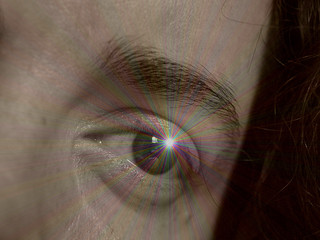 Most migraine sufferers know that when having a migraine, they’ll become sensitive to light. Bright lights commonly trigger migraines.
Most migraine sufferers know that when having a migraine, they’ll become sensitive to light. Bright lights commonly trigger migraines.
But can fluorescent lighting also be a trigger for migraines?
Many people report that fluorescent lighting and computer screens found in the workplace also trigger their migraines. Children suffering from migraines report that the fluorescent lighting in their classrooms also cause their migraine headaches. Despite this, there is still no known scientific evidence to support this claim.
Fluorescent Lighting and Flicker
Fluorescent lights and computer screens do have one thing in common: flicker. Flicker is known as the change in light intensity that results from voltage fluctuation. In computer screens, the flicker is caused by the monitor’s refresh rate. Interestingly, a monitor’s refresh rate is at almost the same frequency as fluorescent lighting – about 50 to 60 hz or a rate of about 60 flickers per second. For most people, this flicker goes completely unnoticed. But migraine sufferers aren’t most people.
Those who suffer from migraines have extremely sensitive brains. They are overly sensitive to a number of potential migraine triggers including:
-
Excitotoxins such as aspartame
-
Poor air quality and pollution
-
Common allergens such as ragweed
-
Scents including perfumes
-
Changes in weather patterns including barometric pressure
So it’s a common conclusion that migraine sufferers would also be sensitive to the flicker of both fluorescent lighting and computer screens.
Preventing Migraines Caused by Fluorescent Lights
There is no perfect solution to prevent fluorescent lighting from triggering migraines, but there are three things commonly done to address this:
-
Changing the lighting (most commonly from fluorescent to incandescent).
-
Wearing sunglasses or glasses with either yellow or blue-tinted lenses.
-
Simply turning the lights off.
Many people try to fix the situation by changing the tubes of the fluorescent lights, but this does not actually solve the problem. This is due to the fact that the flicker is caused by the voltage, not the tubes.
Ophthalmologist Dr. Scott Strickler, MD suggests if the lighting can’t be changed right away and another light source is available, it may be beneficial to disable the tubes by replacing the fluorescent bulbs with ones that have already burned out. This will at least alleviate what causes migraines temporarily until other arrangements can be made or a permanent solution is found.

